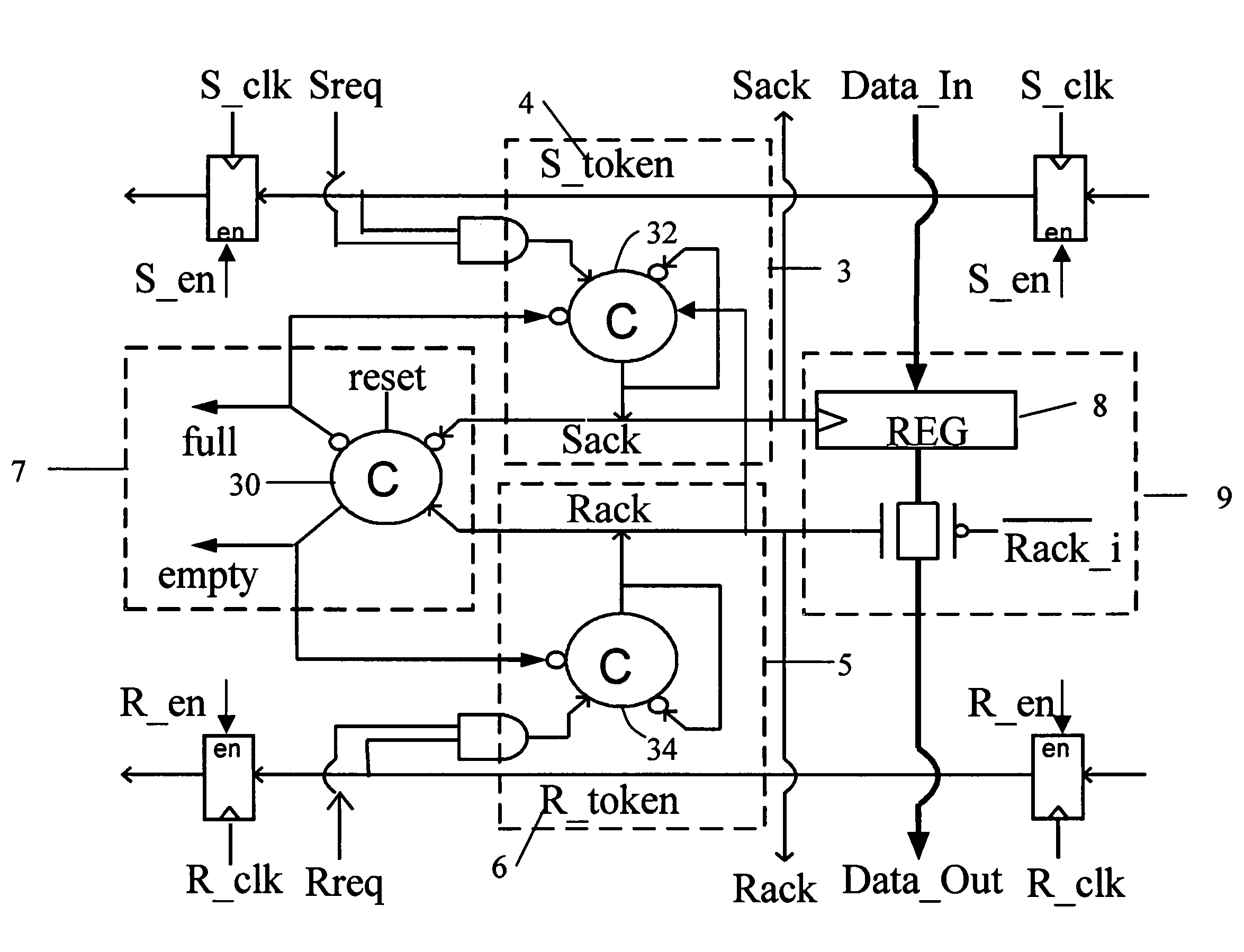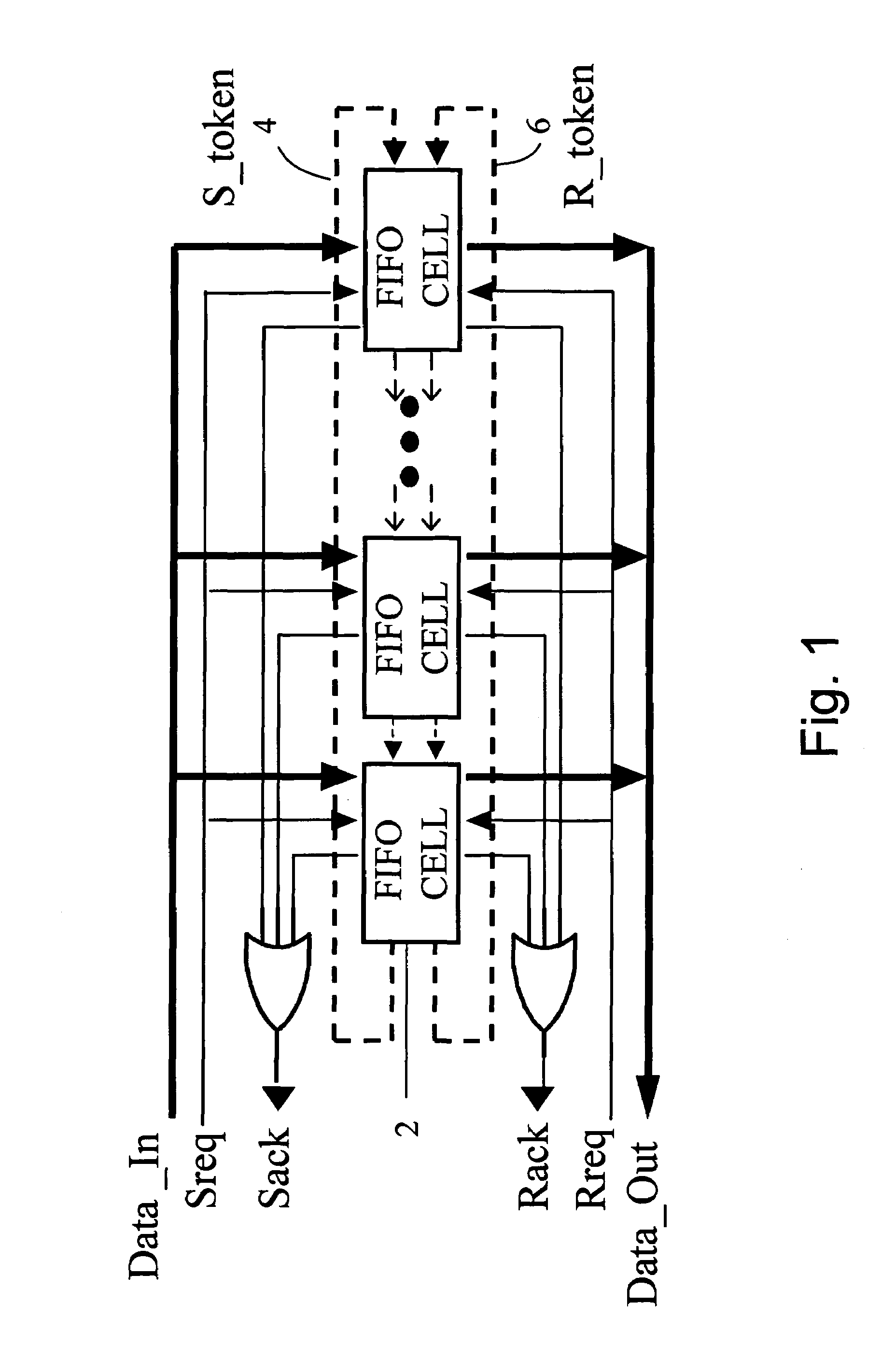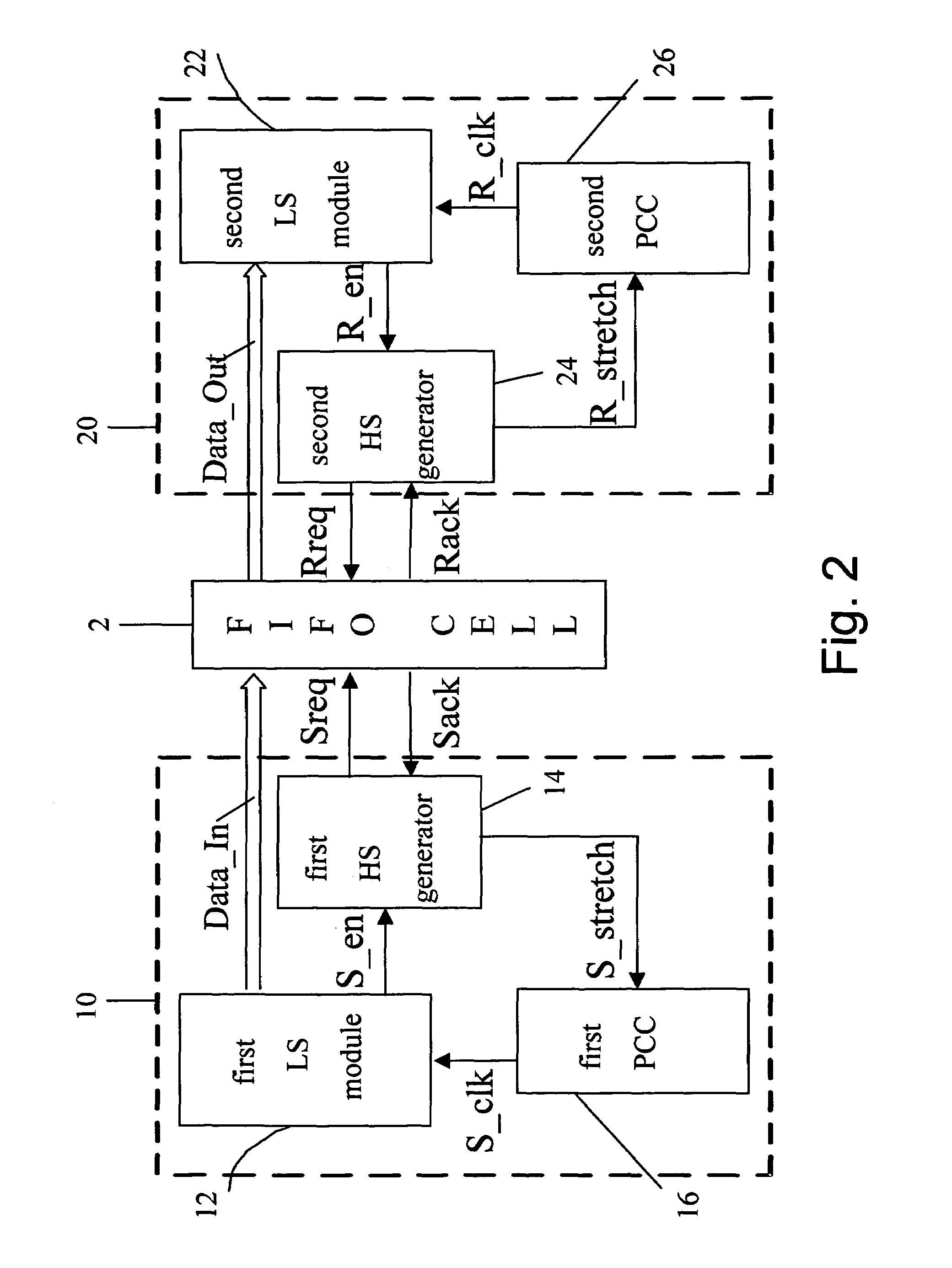Asynchronous first-in-first-out cell
a first-in-first-out, cell technology, applied in the field of asynchronous first-in-first-out cells, can solve the problems of high heat generation, high power consumption of the entire chip system, and difficult to distribute a single synchronous clock to the whole chip system, so as to reduce circuit complexity and power consumption
- Summary
- Abstract
- Description
- Claims
- Application Information
AI Technical Summary
Benefits of technology
Problems solved by technology
Method used
Image
Examples
Embodiment Construction
[0043]The present invention discloses an asynchronous first-in-first-out cell, which not only can apply to a single-supply-voltage GALS system with a single clock frequency or multiple clock frequencies and a multiple-supply-voltage GALS system with a single clock frequency or multiple clock frequencies, but also can apply to the interface circuit of a dual-supply-voltage 16-point radix-22 GALS-based FFT architecture and achieve less power consumption and more latency reduction therein.
[0044]As shown in FIG. 1 a diagram schematically showing the architecture of the asynchronous first-in-first-out cell of the present invention, multiple continuous asynchronous first-in-first-out (FIFO) cells 2 are used as storage devices, which utilize an S_token (sender's token) 4 and a R_token (receiver's token) 6 to control the input / output of data, wherein only the asynchronous FIFO cells 2 having the S_token 4 can be used to temporarily store data, and only the asynchronous FIFO cells 2 having t...
PUM
 Login to View More
Login to View More Abstract
Description
Claims
Application Information
 Login to View More
Login to View More - R&D
- Intellectual Property
- Life Sciences
- Materials
- Tech Scout
- Unparalleled Data Quality
- Higher Quality Content
- 60% Fewer Hallucinations
Browse by: Latest US Patents, China's latest patents, Technical Efficacy Thesaurus, Application Domain, Technology Topic, Popular Technical Reports.
© 2025 PatSnap. All rights reserved.Legal|Privacy policy|Modern Slavery Act Transparency Statement|Sitemap|About US| Contact US: help@patsnap.com



